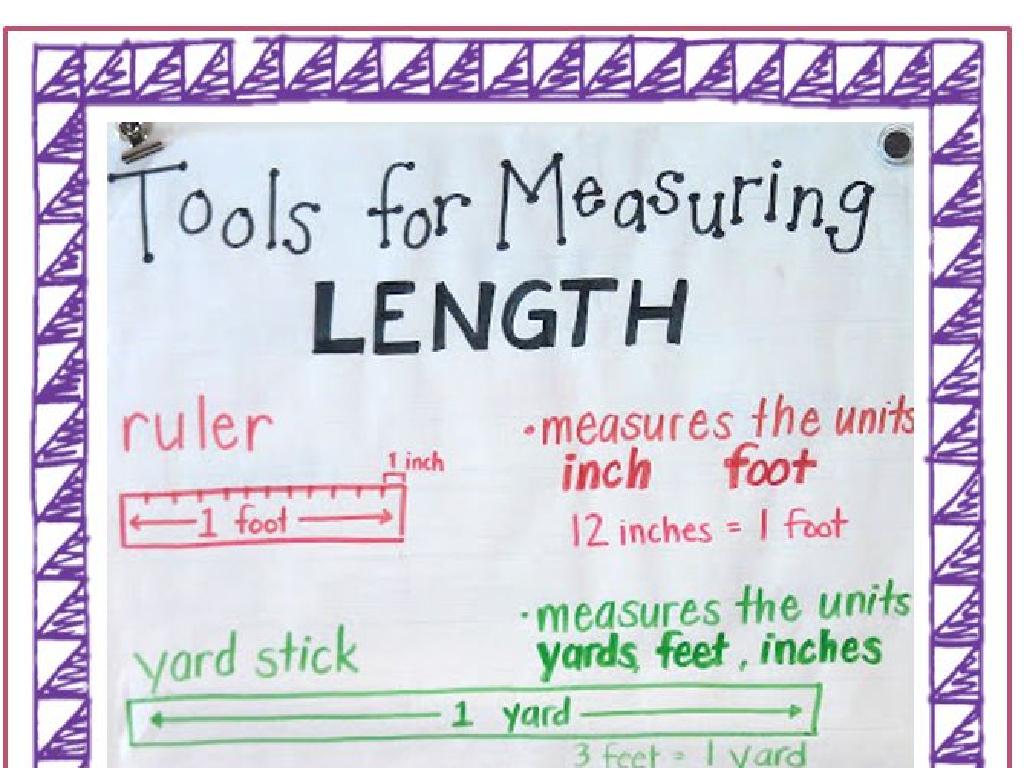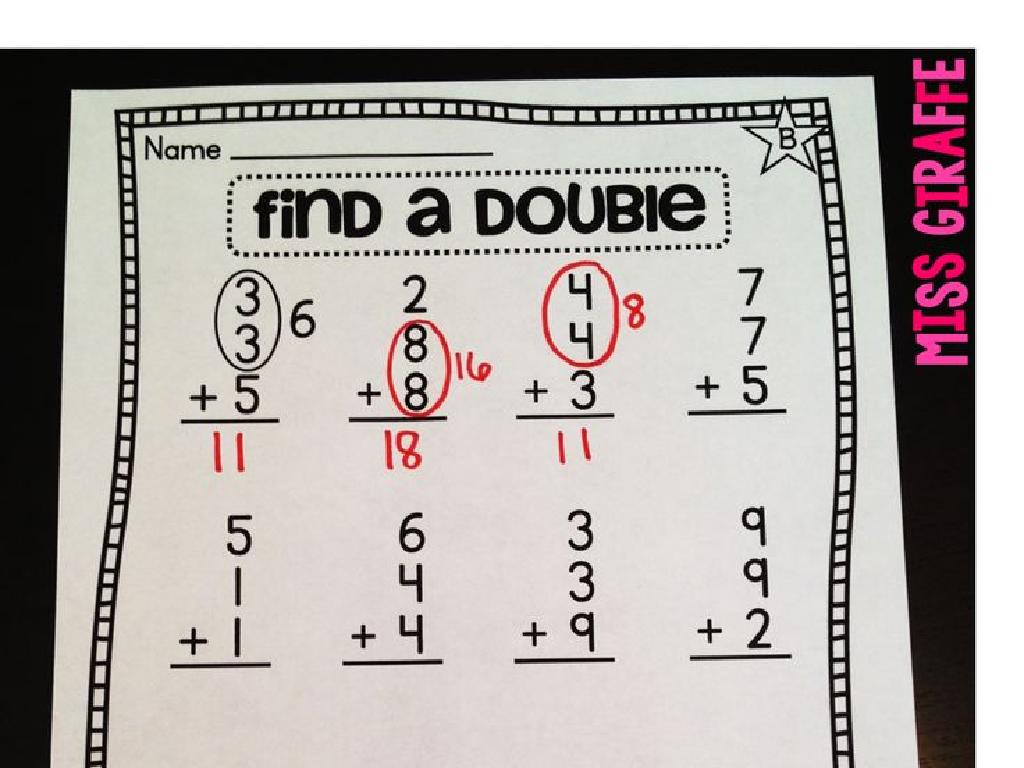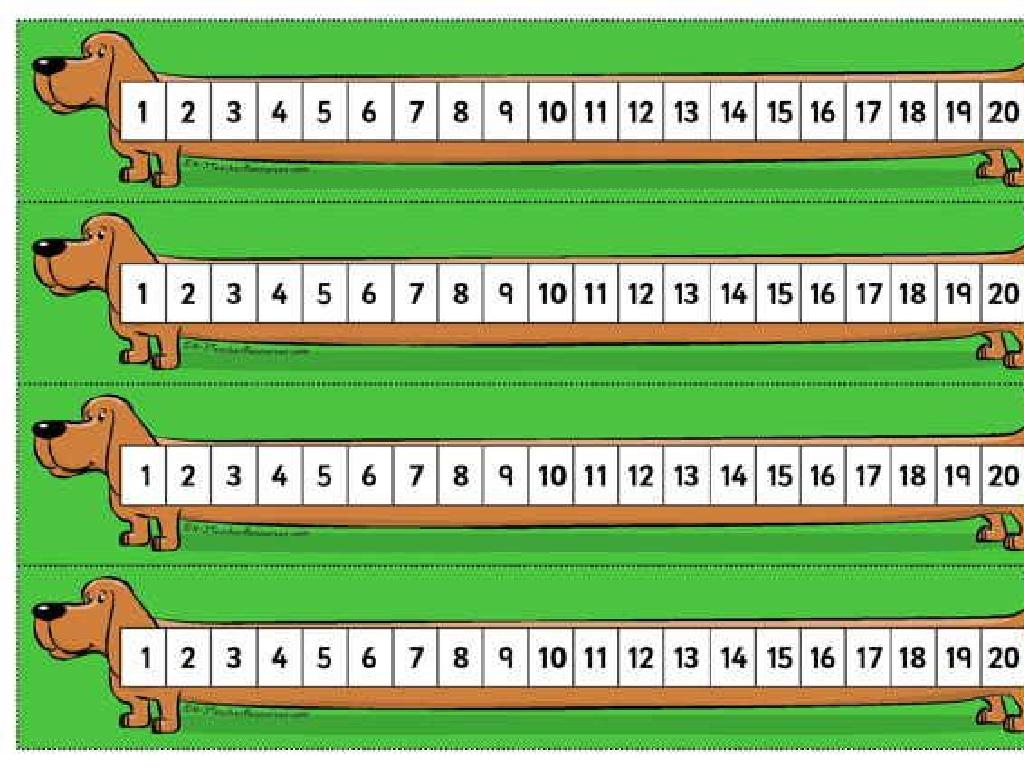Identify Elements Of Poetry
Subject: Language arts
Grade: Fifth grade
Topic: Poetry Elements
Please LOG IN to download the presentation. Access is available to registered users only.
View More Content
Exploring the Beauty of Poetry
– Discover poetry’s building blocks
– Elements like rhythm, rhyme, and structure form the foundation of poems.
– Recognize rhythm and rhyme
– Rhythm is the beat; rhyme is the repetition of sounds.
– Explore imagery and emotions
– Imagery creates pictures in our minds; emotions connect us to the poem.
– Discuss why poetry is enjoyable
– Poetry can be fun, expressive, and a way to tell stories.
|
This slide introduces students to the fundamental elements that make up poetry, such as rhythm, rhyme, structure, imagery, and the expression of emotions. Discuss how rhythm and rhyme contribute to the musical quality of a poem, making it enjoyable to read and listen to. Explore how poets use imagery to paint vivid pictures with words and how emotions in poetry allow us to connect with the poet’s message on a personal level. Encourage students to think about their favorite songs or nursery rhymes as examples of rhythm and rhyme. Ask them to share what they enjoy about poetry or any particular poem they like. This will help them understand that poetry is not just about following rules; it’s a creative form of expression that can evoke feelings and tell stories in unique ways.
Exploring Poetry
– Poetry: A literary form
– It’s a way to share ideas, feelings, and stories.
– Features: Rhythm, rhyme, language
– Poets use beat, repeating sounds, and strong imagery to create a mood.
– Poems as storytelling
– Some poems narrate tales with a beginning, middle, and end.
– Expressing emotions through poems
– Poems can capture and convey deep emotions.
|
Introduce poetry as a unique form of literature that allows writers to express complex ideas and emotions in a condensed and powerful way. Highlight the use of rhythm and rhyme as tools that give poetry its musical quality. Discuss how imagery and carefully chosen language can paint vivid pictures in the reader’s mind. Explain that poems can also serve as narratives that tell stories, much like short stories or novels. Emphasize that poetry is a versatile medium for expressing a wide range of emotions, from joy to sorrow. Encourage students to think of songs as a form of poetry, as they share many of the same elements.
Rhyme & Rhythm in Poetry
– Understanding rhyme in poetry
– Rhyme: words at the end of lines sounding similar, like ‘cat’ and ‘hat’.
– Exploring rhythm: the poem’s beat
– Rhythm is like the heartbeat of the poem, felt through stressed and unstressed syllables.
– Clapping activity: find the rhythm
– We’ll clap to the rhythm of a poem to feel the beat together.
|
This slide introduces students to the concepts of rhyme and rhythm, which are essential elements of poetry. Rhyme is the repetition of similar sounding words at the end of lines, which helps to create a musical quality in poetry. Rhythm refers to the pattern of beats or stresses in spoken or written language, often giving poetry its flow and tempo. Engage the class in a fun clapping activity where they can clap along to the rhythm of a simple poem. This will help them physically feel the beat and pace, making the concept of rhythm more tangible. Choose a poem that is age-appropriate and has a clear, consistent rhythm to ensure that students can easily follow along.
Imagery & Similes in Poetry
– Imagery paints mental pictures
– Helps readers visualize the scene or emotion
– Similes use ‘like’ or ‘as’ for comparison
– Shows similarities between different things
– Example: Moon bright as a diamond
– ‘The moon was as bright as a diamond in the sky’ compares the moon’s brightness to a shiny diamond
|
This slide introduces students to the concepts of imagery and similes in poetry. Imagery is a literary device that poets use to create vivid pictures in the minds of their readers, often appealing to the senses. Similes are a type of figurative language that compare two different things using the words ‘like’ or ‘as’, helping to paint a more powerful image or convey a deeper meaning. The example provided illustrates how a simile can enhance imagery. Encourage students to think of their own similes and discuss how these elements can affect their experience of a poem.
Exploring Poetry: Metaphors & Alliteration
– Understanding metaphors
– A metaphor compares two things by saying one thing ‘is’ another.
– Alliteration and its effect
– Alliteration uses the same consonant sound at the start of closely connected words.
– Example: ‘Peter Piper…’
– ‘Peter Piper picked a peck of pickled peppers’ shows alliteration with the ‘p’ sound.
– Practice creating your own
|
This slide introduces two key poetic elements: metaphors and alliteration. Metaphors are a figure of speech that describe an object or action in a way that isn t literally true but helps explain an idea or make a comparison. Alliteration is the occurrence of the same letter or sound at the beginning of adjacent or closely connected words. It’s often used to create rhythm and a sense of unity in poetry. Use the classic tongue twister ‘Peter Piper…’ as an example to illustrate alliteration. Encourage students to think of their own examples of metaphors and to create a sentence with alliteration to enhance their understanding of these concepts.
Exploring Onomatopoeia & Repetition in Poetry
– Onomatopoeia: Sound-imitating words
– Words like ‘buzz’ mimic real sounds
– Repetition: Echoing words or phrases
– Repeating to emphasize ideas or themes
– Example in poetry
– ‘The bees buzzed by, buzzing busily’ uses both elements
|
This slide introduces students to the concepts of onomatopoeia and repetition in poetry. Onomatopoeia is a fun way to bring sound into text by using words that imitate real-life sounds. Repetition involves using the same word or phrase multiple times to make an idea stand out. The example ‘The bees buzzed by, buzzing busily’ illustrates both concepts, with ‘buzzed’ and ‘buzzing’ demonstrating onomatopoeia and the repetition of the sound ‘buzz’ emphasizing the busy nature of the bees. Encourage students to listen for onomatopoeia in their surroundings and think of words that could mimic those sounds. Also, ask them to consider the effect of repetition in songs or poems they like. This will help them understand the impact of these elements in poetry.
Exploring the Structure of Poems
– Understanding stanzas
– Stanzas are like paragraphs in a story.
– Free verse vs. rhymed poems
– Free verse has no set rhythm, while rhymed poems have a repeating pattern.
– Discovering Haiku
– Haiku is a short, three-line poem with a specific syllable count.
– Recognizing syllable patterns
– Haikus follow a 5-7-5 syllable structure, creating a rhythm.
|
This slide introduces students to the basic structural elements of poetry. Stanzas are the building blocks of a poem, similar to how paragraphs are used in stories. Differentiate between free verse poems, which flow without a strict structure, and rhymed poems that have a specific beat and end rhyme. Introduce Haiku as a form of poetry from Japan, emphasizing its unique 5-7-5 syllable pattern. Encourage students to identify these elements in poems they read and to try writing their own Haikus. Use examples of each type of poem to illustrate these concepts clearly.
Class Activity: Create Your Own Poem!
– Select an object in our classroom
– Write a poem including two poetry elements
– Use elements like rhyme, rhythm, or metaphor
– Share your creative work with the class
– Reflect on the use of poetry elements
– Discuss how these elements enhance your poem
|
This activity is designed to reinforce the students’ understanding of poetry elements by applying them creatively. Encourage students to look around the classroom and choose any object that sparks their interest. They should write a short poem, aiming to incorporate at least two of the elements discussed in class, such as rhyme, rhythm, alliteration, or metaphor. After writing, students will have the opportunity to share their poems with the class, fostering a supportive environment for creative expression. As a teacher, provide feedback on their use of poetry elements and guide a discussion on how these elements contribute to the poem’s impact. Possible activities include writing acrostic poems, creating haikus, or composing couplets, ensuring variety and engagement for all students.






